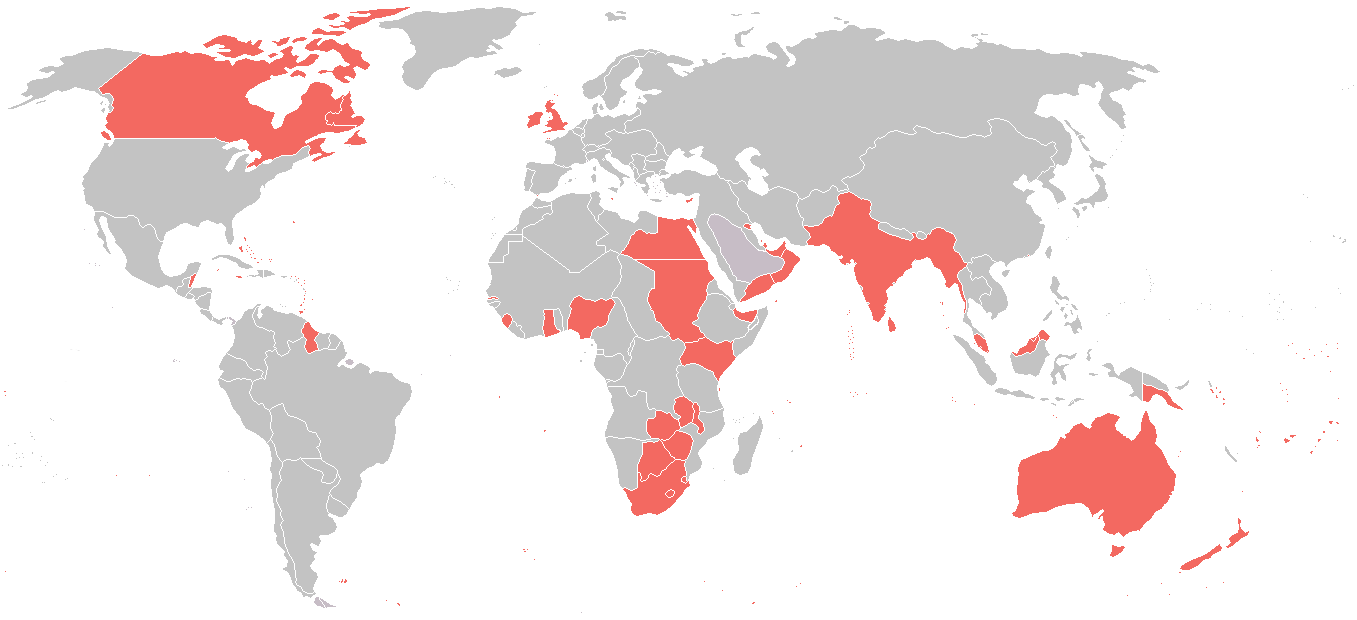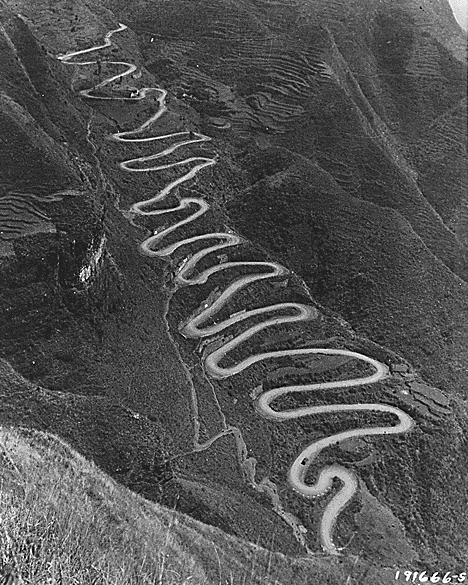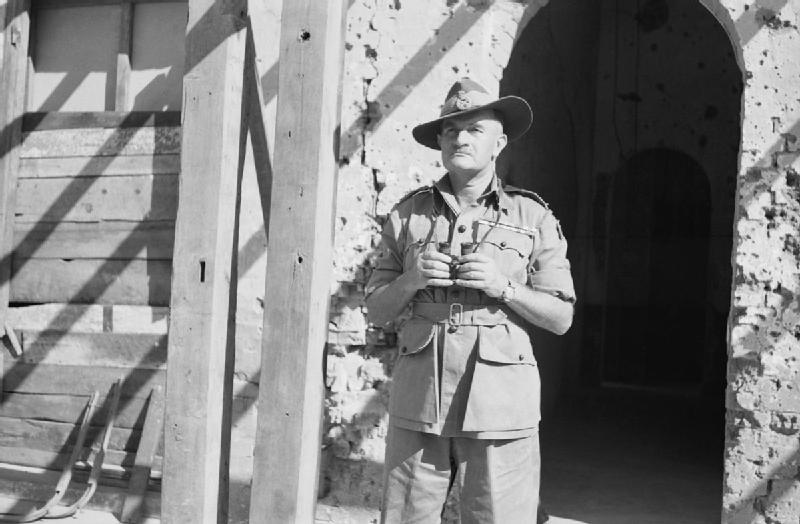|
Harold Rawdon Briggs
Lieutenant-general (United Kingdom), Lieutenant-General Sir Harold Rawdon Briggs, (24 July 1894 – 27 October 1952) was a senior British Indian Army officer, active during World War I and World War II and the Malayan Emergency. Briggs was highly regarded by his superiors, among them being Field Marshal William Slim, 1st Viscount Slim, Sir William Slim, who is perhaps most famous as being the commander of the Fourteenth Army (United Kingdom), British Fourteenth Army during the Burma campaign (1944), Burma campaign. Of Briggs, who commanded the 5th Infantry Division (India), 5th Indian Infantry Division during the campaign, Slim wrote: "I know of few commanders who made as many immediate and critical decisions on every step of the ladder of promotion, and I know of none who made so few mistakes." Early life and military career Born in Pipestone, Minnesota, to English parents who returned to England a few years after his birth, Briggs was an American citizen until receiving Britis ... [...More Info...] [...Related Items...] OR: [Wikipedia] [Google] [Baidu] |
Pipestone, Minnesota
Pipestone is a city in Minnesota, United States, and the county seat of Pipestone County. The population was 4,215 at the 2020 census. The city is also the site of the Pipestone National Monument. History Pipestone was platted in October, 1876, incorporated as a village on February 10, 1881, and as a city on July 23, 1901. Pipestone took its name from Pipestone County. Geography According to the United States Census Bureau, the city has a total area of , all land. Climate The town has a humid continental climate similar to the rest of the state; though near the southern border, Pipestone is on measurably higher ground than many areas to the north and east. Demographics 2010 census As of the census of 2017, there were 4,034 people, 1,923 households, and 1,084 families living in the city. The population density was . There were 2,134 housing units at an average density of . The racial makeup of the city was 90.2% White, 0.9% African American, 1.9% Native American, 1.1% A ... [...More Info...] [...Related Items...] OR: [Wikipedia] [Google] [Baidu] |
Distinguished Service Order
The Distinguished Service Order (DSO) is a military decoration of the United Kingdom, as well as formerly of other parts of the Commonwealth, awarded for meritorious or distinguished service by officers of the armed forces during wartime, typically in actual combat. Since 1993 it has been awarded specifically for 'highly successful command and leadership during active operations', with all ranks being eligible. History Instituted on 6 September 1886 by Queen Victoria in a royal warrant published in ''The London Gazette'' on 9 November, the first DSOs awarded were dated 25 November 1886. The order was established to reward individual instances of meritorious or distinguished service in war. It was a military order, until recently for officers only and typically awarded to officers ranked major (or equivalent) or higher, with awards to ranks below this usually for a high degree of gallantry, just short of deserving the Victoria Cross. Whilst normally given for service un ... [...More Info...] [...Related Items...] OR: [Wikipedia] [Google] [Baidu] |
Palestine (region)
Palestine ( el, Παλαιστίνη, ; la, Palaestina; ar, فلسطين, , , ; he, פלשתינה, ) is a geographic region in Western Asia. It is usually considered to include Israel and the State of Palestine (i.e. West Bank and Gaza Strip), though some definitions also include part of northwestern Jordan. The first written records to attest the name of the region were those of the Twentieth dynasty of Egypt, which used the term "Peleset" in reference to the neighboring people or land. In the 8th century, Assyrian inscriptions refer to the region of "Palashtu" or "Pilistu". In the Hellenistic period, these names were carried over into Greek, appearing in the Histories of Herodotus in the more recognizable form of "Palaistine". The Roman Empire initially used other terms for the region, such as Judaea, but renamed the region Syria Palaestina after the Bar Kokhba revolt. During the Byzantine period, the region was split into the provinces of Palaestina Prima, Palaestin ... [...More Info...] [...Related Items...] OR: [Wikipedia] [Google] [Baidu] |
31st Punjabis
The 31st Punjabis was an infantry regiment of the British Indian Army. It was raised in 1857, as Van Cortlandt's Levy. The regiment was designated as the 31st Punjabis in 1903 and became 2nd Battalion 16th Punjab Regiment in 1922. In 1947, it was allocated to the Pakistan Army, where it continues to exist as 14th Battalion The Punjab Regiment.Rizvi, Brig SHA. (1984). ''Veteran Campaigners – A History of the Punjab Regiment 1759-1981''. Lahore: Wajidalis.Lawford, Lt Col JP, and Catto, Maj WE. (1967). ''Solah Punjab: The History of the 16th Punjab Regiment''. Aldershot: Gale & Polden. Early history The regiment was raised during the upheaval of the Indian Mutiny, by General Van Cortlandt at Ferozepur on 22 May 1857, as Van Cortlandt's Levy. Their class composition was Punjabi Muslims, Sikhs, Dogras, Hill Rajputs and Gurkhas. The regiment took part in the Bhutan War of 1864-66, the Second Afghan War of 1878-80, and the Siege of Malakand in 1895-97. At Malakand, Sir Winston Church ... [...More Info...] [...Related Items...] OR: [Wikipedia] [Google] [Baidu] |
British Army
The British Army is the principal land warfare force of the United Kingdom, a part of the British Armed Forces along with the Royal Navy and the Royal Air Force. , the British Army comprises 79,380 regular full-time personnel, 4,090 Gurkhas, and 28,330 volunteer reserve personnel. The modern British Army traces back to 1707, with antecedents in the English Army and Scots Army that were created during the Restoration in 1660. The term ''British Army'' was adopted in 1707 after the Acts of Union between England and Scotland. Members of the British Army swear allegiance to the monarch as their commander-in-chief, but the Bill of Rights of 1689 and Claim of Right Act 1689 require parliamentary consent for the Crown to maintain a peacetime standing army. Therefore, Parliament approves the army by passing an Armed Forces Act at least once every five years. The army is administered by the Ministry of Defence and commanded by the Chief of the General Staff. The Brit ... [...More Info...] [...Related Items...] OR: [Wikipedia] [Google] [Baidu] |
Officer (armed Forces)
An officer is a person who holds a position of authority as a member of an armed force or uniformed service. Broadly speaking, "officer" means a commissioned officer, a non-commissioned officer, or a warrant officer. However, absent contextual qualification, the term typically refers only to a force's ''commissioned officers'', the more senior members who derive their authority from a commission from the head of state. Numbers The proportion of officers varies greatly. Commissioned officers typically make up between an eighth and a fifth of modern armed forces personnel. In 2013, officers were the senior 17% of the British armed forces, and the senior 13.7% of the French armed forces. In 2012, officers made up about 18% of the German armed forces, and about 17.2% of the United States armed forces. Historically, however, armed forces have generally had much lower proportions of officers. During the First World War, fewer than 5% of British soldiers were officers (partly ... [...More Info...] [...Related Items...] OR: [Wikipedia] [Google] [Baidu] |
British Entry Into World War I
Britain entered World War I on 4 August 1914 when the King declared war after the expiration of an ultimatum to Germany. The official explanation focused on protecting Belgium as a neutral country; the main reason, however, was to prevent a French defeat that would have left Germany in control of Western Europe. The Liberal Party was in power with prime minister H. H. Asquith and foreign minister Edward Grey leading the way. The Liberal cabinet made the decision, although the party had been strongly anti-war until the last minute. The Conservative Party was pro-war. The Liberals knew that if they split on the war issue, they would lose control of the government to the Conservatives. Background For much of the 19th century, Britain pursued a foreign policy later known as splendid isolation, which sought to maintain the balance of power in Europe without formal alliances. As Europe divided into two power blocs during the 1890s, the 1895-1905 Conservative government realised t ... [...More Info...] [...Related Items...] OR: [Wikipedia] [Google] [Baidu] |
Royal Military College, Sandhurst
The Royal Military College (RMC), founded in 1801 and established in 1802 at Great Marlow and High Wycombe in Buckinghamshire, England, but moved in October 1812 to Sandhurst, Berkshire, was a British Army military academy for training infantry and cavalry officers of the British and Indian Armies. The RMC was reorganised at the outbreak of the Second World War, but some of its units remained operational at Sandhurst and Aldershot. In 1947, the Royal Military College was merged with the Royal Military Academy, Woolwich, to form the present-day all-purpose Royal Military Academy Sandhurst. History Pre-dating the college, the Royal Military Academy, Woolwich, had been established in 1741 to train artillery and engineer officers, but there was no such provision for training infantry and cavalry officers. The Royal Military College was conceived by Colonel John Le Marchant, whose scheme for establishing schools for the military instruction of officers at High Wycombe and Great M ... [...More Info...] [...Related Items...] OR: [Wikipedia] [Google] [Baidu] |
Bedford School
:''Bedford School is not to be confused with Bedford Girls' School, Bedford High School, Bedford Modern School, Old Bedford School in Bedford, Texas or Bedford Academy in Bedford, Nova Scotia.'' Bedford School is a public school (English independent day and boarding school for boys) in the county town of Bedford in England. Founded in 1552, it is the oldest of four independent schools in Bedford run by the Harpur Trust. Bedford School is composed of the Preparatory School (ages 7 to 13) and the Upper School (ages 13 to 18). There are around 1,100 pupils, of whom approximately one half are boarders. In 2014, James Hodgson succeeded John Moule as headmaster after he moved on as headmaster of Radley College, another independent school for boys. The school has produced six Nobel Prize winner, five recipients of the Victoria Cross, twenty-four rugby internationals, the winners of eight Olympic gold medals, and a former England cricket captain, Alastair Cook. Bedford School was ... [...More Info...] [...Related Items...] OR: [Wikipedia] [Google] [Baidu] |
Burma Campaign (1944)
The fighting in the Burma campaign in 1944 was among the most severe in the South-East Asian Theatre of World War II. It took place along the borders between Burma and India, and Burma and China, and involved the Commonwealth of Nations, British Commonwealth, Republic of China (1912–49), Chinese and United States forces, against the forces of Empire of Japan, Imperial Japan and the Indian National Army. British Commonwealth land forces were drawn primarily from the United Kingdom, British Raj, British India and Africa. The Allies had overcome the logistic and organisational difficulties which had crippled their earlier efforts, and they were preparing to invade Japanese-occupied Burma at several widely separated points. The Japanese forestalled them by launching their own offensive into India, and this offensive became larger in scope than originally intended. By the end of the year, the Allies had achieved significant territorial gains only in one sector, the extreme north- ... [...More Info...] [...Related Items...] OR: [Wikipedia] [Google] [Baidu] |
Fourteenth Army (United Kingdom)
The British Fourteenth Army was a multi-national force comprising units from Commonwealth of Nations, Commonwealth countries during the World War II, Second World War. As well as British Army units, many of its units were from the British Indian Army, Indian Army and there were also significant contributions from British Army's West Africa, West and East African divisions. It was often referred to as the "Forgotten Army" because its operations in the Burma Campaign were overlooked by the contemporary press, and remained more obscure than those of the corresponding formations in Europe for long after the war. For most of the Army's existence, it was commanded by Lieutenant-general (United Kingdom), Lieutenant-General William Slim, 1st Viscount Slim, William Slim. History Creation The army was formed in 1943 in eastern India. With the creation of South East Asia Command in late 1943, the Eastern Army which formerly controlled operations against the Imperial Japanese Army, Japanese ... [...More Info...] [...Related Items...] OR: [Wikipedia] [Google] [Baidu] |
William Slim, 1st Viscount Slim
Field Marshal William Joseph Slim, 1st Viscount Slim, (6 August 1891 – 14 December 1970), usually known as Bill Slim, was a British military commander and the 13th Governor-General of Australia. Slim saw active service in both the First and Second World Wars and was wounded in action three times. During the Second World War he led the Fourteenth Army, the so-called "forgotten army" in the Burma campaign. After the war he became the first British officer who had served in the Indian Army to be appointed Chief of the Imperial General Staff. From 1953 to 1959 he was Governor-General of Australia. In the early 1930s, Slim also wrote novels, short stories, and other publications under the pen name Anthony Mills. Early years William Slim was born at 72 Belmont Road, St Andrews, Bristol, the son of John Slim by his marriage to Charlotte Tucker, and was baptised there at St Bonaventure's Roman Catholic church, Bishopston. He was brought up first in Bristol, attending St Bonavent ... [...More Info...] [...Related Items...] OR: [Wikipedia] [Google] [Baidu] |

_-_Tallinn_Museum_of_Orders.jpg)








